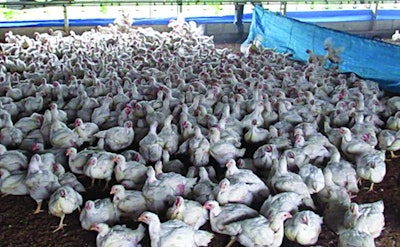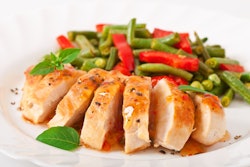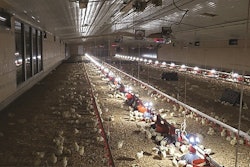
By reducing friction points at pre-slaughter, the quality of broilers sent to slaughter rises and the processing plant’s yield increases.
Friction is anything that slows a company down, impedes growth or hampers innovation. It results in wasted time and effort, slower processes, wasted money and lower productivity.
There are a number of areas where friction can be eliminated, for example, by keeping meetings short, ensuring that maintenance is thorough or that purchasing procedures are simple and effective.
Friction can also be the result of company culture. Rather than focusing on whether staff are engaged in detecting opportunities for improvement, in too many companies there is simply a focus on whether employees are doing their jobs.
Whoever manages the pre-slaughter stage must micromanage in such a way as to ensure that workers can perform to the best of their ability without friction. Workers should not be viewed as an expense, but as the most important investment. By adopting this attitude, companies can tap into an inexhaustible supply of ideas, and achieve higher than expected results.
There are a number of areas where friction tends to occur at pre-slaughter, and it is worth remembering that 40% of the damage that can occur to broilers happens at this stage, often due to intense wing flapping.
Enclosures
In many companies, flocks are reared without being divided into groups, meaning that dividers must be brought into the house to facilitate harvesting.
To ensure that harvesting takes place as smoothly as possible, the workers that bring these dividers should walk slowly, like the birds, so as not to be viewed as intruders. This will make the difference between the birds remaining calm or being startled.
To achieve zero friction, the tranquil environment to which the birds have become accustomed must not be disturbed. Maintaining this environment helps to ensure that there is no intense wing flapping, and that birds do not pile on top of each other digging in their claws to achieve balance, resulting in harm to wings, scratches to the shoulders and thighs and bleeds in the breast.
Broiler capture
To achieve zero friction during capture, helping to ensure that loaded trucks depart in a timely fashion, silent machines that look very much like manual lawnmowers can be used to drive the birds towards the dividers.
When large numbers of birds are being harvested, remote control small terrain tractors can be employed, however staff must be fully trained in their use. Using these vehicles can not only result in making the process more pleasant for those involved but can also raise productivity.
Capture is usually carried out at night, with the house lights turned off, and colored lights brought in. However, these colored lights require investment and so, in some cases, the only source of light comes from the lamps of the forklift trucks used to move cages and pallets.
While this may be more economical, it results in poor visibility in some parts of the broiler house and, as a consequence, the harvesting team must work more slowly.
A solution to this would be to use night vision goggles. This can lead to greater efficiency given that workers can see more clearly and would lead to a reduction in rejects.
When the harvesting team is able to work more quickly and efficiently, pressure on truck drivers is reduced. They have their own timetables to follow and, if they depart late, may be inclined to drive with less care, which could harm the birds.
Loading the trucks
Filled cages are often removed from the broiler shed by sliding them on a network of plastic tubes. To load them onto the trucks, conveyors or elevators are used. Once raised, stacks of crates are pulled to where they need to be. Using carts, however, can reduce the friction between the truck floor and the bottom of the cages, increasing the useful life of the cages.
Transport to the processing plant
Truck drivers must be trained to ensure that they understand why it is important to comply with company speed limits, for example, which help to ensure that broilers are not harmed on their way to the processing plant.

Closing the loop
While monitoring may take place at the processing plant, it is not always the case that it occurs pre-slaughter, however, monitoring at this stage would help to close the loop in ensuring quality.
Distance from the processing plant may have made this difficult in the past, and monitoring may have been further complicated by the fact that harvesting tends to take place at night and, in some parts of the world, communications may be poor.
However, with today’s digital technologies it is now possible to fully monitor this last stage of broiler production.
A virtual infrastructure with a set of control stations using artificial intelligence can ensure that those responsible for the various tasks that must be carried out are fully connected, enabling them to ensure that tasks are carried out as they should be.
This connectivity can help in the formation of groups of skilled individuals who ensure that birds receive the best possible treatment at pre-slaughter and that workers are able to work to the best of their abilities. Reducing friction makes life easier for everyone involved in pre-slaughter.
What Japan's auto industry can teach poultry processors
















